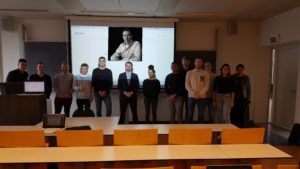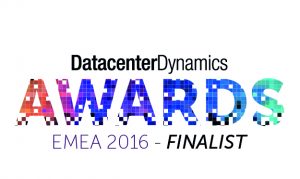The State of SaaS Disruption – 2025 | Part 1

The AI Tsunami: How the SaaS World is Evolving
For the past fifteen years, the Software-as-a-Service model has been the engine of enterprise innovation. It created trillion-dollar companies and reshaped how every business on the planet operates. That era is now undergoing a profound evolution.
I’m hearing a growing chorus in boardrooms and PE/VC conversations declaring that “SaaS is dead.” While I find that statement to be a dramatic oversimplification, it points to an undeniable truth: the SaaS world we knew—built on per-seat licenses, feature wars, and apps as the primary interface—is facing a seismic shift. This isn’t a distant forecast; it is the central strategic challenge for every SaaS leader and investor in 2025.
The force driving this change is not another business model innovation. It is a technological tsunami called “Artificial Intelligence”.
This isn’t about adding a “smart” feature to your dashboard. It is a fundamental rewiring of how software is created, experienced, and valued. The goal of this series is to move beyond the hype, acknowledging the real threats while framing the situation as a profound evolution—one that presents immense opportunity. Over these six parts, I will provide a clear-eyed playbook for navigating this disruption, starting with a stark assessment of the landscape today.
Key Takeaways for the C-Suite & Investors
- SaaS Isn’t “Dead,” But Its Foundation is Obsolete. The model of an application sitting on top of a database is no longer a defensible moat. AI has commoditized the very act of building software, forcing a change in where we find value.
- The Feature War is Over. The Outcome War Has Begun. Competing on who has the longest feature list is a losing battle. The new competitive frontier is about providing autonomous outcomes, driven by AI that can execute complex tasks without direct human operation.
- The User Interface is No Longer a Guaranteed Moat. The rise of AI Agents threatens to unbundle the front end from the back end. If an AI can interact with your service via an API, the value of your carefully crafted UI could plummet.
- This is a Strategic Imperative, Not a Product Update. Responding to this shift requires more than a new line item on your product roadmap. It demands a holistic re-evaluation of your business model, go-to-market strategy, and a clear-eyed assessment of your company’s true defensibility.
The End of an Era, The Beginning of a Reckoning
The SaaS business model was beautifully simple. Build a compelling application on top of a database, deliver it via the cloud, and charge users a recurring fee. For years, the primary axes of competition were feature velocity, user experience (UI/UX), and go-to-market execution. Companies with the best-funded engineering teams could out-build competitors, and those with the most efficient sales and marketing engines could out-sell them.
That model is being redefined at breathtaking speed.
AI has become a massive force of supply-side commoditization. Tools like GitHub Copilot and other AI-assisted platforms have supercharged developer productivity, enabling smaller, leaner teams to replicate features that once took large engineering departments months or years to build. As I’ve seen with my portfolio companies, what used to be a technical moat is now, at best, a temporary speed bump. When a motivated developer can knock off your core functionality in a weekend, you are no longer competing on technology; you are competing on something else entirely.
This isn’t a gentle tide. It is an AI Tsunami, and it is washing away the foundations of value that the SaaS industry was built upon.
Beyond Clippy: Understanding the Two Waves of AI Disruption
To navigate this new reality, it’s critical to understand that the AI Tsunami is hitting the SaaS shoreline in two distinct, powerful waves. Many leaders are preparing for the first wave, but it’s the second one that heralds a true paradigm shift.
Wave 1: Generative AI – The Great Feature Accelerator
This is the wave we are all feeling right now. Generative AI (GenAI) models like GPT-4 and Claude are being integrated into existing SaaS products to enhance functionality. They can draft marketing copy, summarize sales calls, write SQL queries, and automate repetitive tasks.
This is the evolutionary force of AI. It makes existing products better, faster, and smarter. While powerful, this wave primarily accelerates the old game. It helps you win the feature war, but it doesn’t change the rules of the war itself. The danger here is complacency. Adding GenAI features is now table stakes, and the productivity gains it offers your team are also available to your competitors. It’s a race that requires you to run faster just to stay in the same place.
Wave 2: Agentic AI – The Great Interface Unbundler
This is the revolutionary wave, and it demands strategic preparation. The next paradigm is Agentic AI—autonomous systems that can understand a goal, create a plan, and execute complex, multi-step tasks across different applications on a user’s behalf.
Think beyond a chatbot. An AI Agent is an entity you could instruct: “Find the top five enterprise leads from our CRM who have a budget over $250k, draft personalized outreach emails based on their recent company news, and schedule introductory calls on my calendar for next week.” The agent would then perform those tasks without you ever opening your CRM or email client.
As Microsoft CEO Satya Nadella has argued, AI agents are poised to become a new “AI tier” in the software stack. This layer sits between the user and the applications. In this future, the primary interface to software is no longer a graphical user interface (GUI); it is a conversational command to an agent. Your SaaS product, in this scenario, becomes a “headless” collection of APIs that these agents call upon. Your beautiful, award-winning UI, a traditional moat, risks being bypassed entirely.
The New Strategic Imperative: From Application to Outcome
This brings us to the core strategic shift required to thrive. The value proposition of SaaS is moving from the application to the outcome. Customers will not pay for access to a tool; they will pay for a result that an AI delivers.
This shift challenges traditional SaaS business models. Per-seat pricing becomes illogical if an AI agent can perform the work of ten employees. If your value is no longer in the UI, then your brand, your user habits, and your ecosystem integrations become paramount.
As a SAAS business leader or investor, you must now ask a new set of honest questions:
- What is our core, defensible asset? If it’s not the code or the UI, is it our proprietary data, our deep workflow integration, our trusted brand, or our unique access to a distribution channel?
- How do we price for outcomes? What does a value-based model look like when AI is delivering that value?
- How do we prepare for a “headless” future? Is our product architected to be “agent-friendly” with robust and well-documented APIs?
This is no longer a technical discussion to be delegated to the CTO. It is a fundamental business model conversation that belongs in the boardroom. The companies that thrive will be those that confront these questions head-on.
The established SaaS world is changing, but this disruption is also creating a once-in-a-generation opportunity to build the next wave of market-defining companies.
Coming up in Part 2: I will dive deep into the most transformative force on the horizon: The Agentic Shift and the coming “No UI” future. We’ll explore what it means to build “agent-native” products and how to survive when your interface is no longer your own.


